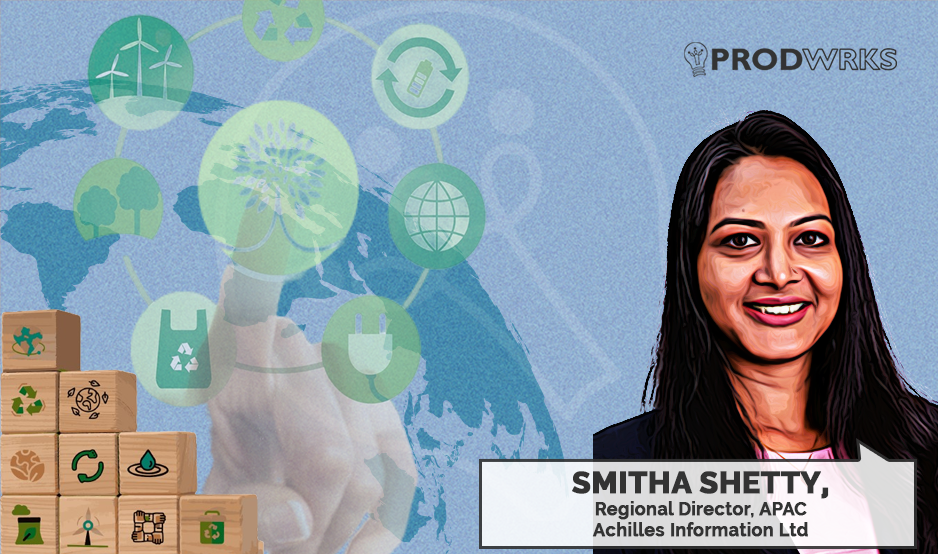
In today’s interconnected world, the intricate dance of supply chain and logistics orchestrates every facet of our lives. From the smartphones that fit snugly into our pockets to the T-shirts that line our closets, the products we use daily arrive courtesy of the meticulously choreographed movements within vast and bustling warehouses.
In the heart of this supply chain symphony stands Stellar Value Chain Solutions, operating in contract logistics space with omnichannel fulfillment services in segments such as e-commerce, automotive, consumer, retail, healthcare, and pharmaceuticals.
Incorporated in 2016 by logistics veteran Anshuman Singh, Stellar Value Chain Solutions is one of India’s largest consumer supply chain companies. It has 14 million square feet of state-of-art, Grade-A warehousing network and distribution centers across 21 major cities. The technological developments and process innovations at Stellar play a pivotal role in transforming how supply chains are managed across the country.
In an exclusive interview with Shalabh Raizada, the Chief Information Officer (CIO) of Stellar Value Chain Solutions, we unveil the intricacies of his day-to-day operations, Stellar’s innovative solution-driven technologies, and technology-driven strategies that drive success for mega warehousing operations.
Tailoring Solutions in a Diverse Landscape
Shalabh’s typical day as the CIO of Stellar is an exploration of diversity – not just in terms of geographical presence but also in the scale and nature of business operations. With warehouses catering to the requirements of diverse clients of varying sizes – from automotive to pharma – a one-size-fits-all approach becomes obsolete.
Shalabh explains, "Almost every solution has to be customized for a specific requirement. An off-the-shelf warehouse management solution (WMS) does not work here.”
Warehousing and logistic operations, as Shalabh explains, is a dynamic landscape that demands adaptability and innovation. Shalabh’s daily routine is a testament to this diversity. He orchestrates a symphony of operational refinement by collaborating with operations teams on the ground, customers, and even customers’ customers.
"A typical day for me would be calls with my customers, calls with my operations team, and a stand-up with the IT team. I’ll be looking at the spread of my customers and identifying areas of improvement. These improvements can be technology-enabled or process-enabled.”
As the CIO for one of India’s largest logistics players, Shalabh shares that his key decisions involve finding a delicate balance between addressing ongoing operational challenges and identifying areas where technology can make a tangible impact to improve operational processes.
Driving Efficiency Through Process-Driven Tech Solutions
Shalabh shares that the best part of developing bespoke solutions for customers’ unique supply chain requirements is that “the customers enjoy being a part of this development journey as it’s going to make their lives simpler.”
These solutions arise from in-depth study and collaboration with both the customer’s operational teams and their IT divisions to figure out efficient processes that solve major pain points and bottlenecks.
He says, “There's nothing like going to a warehouse wearing jeans, t-shirts, and sneakers and spending multiple shifts there to talk to people and observe how they work. When you have a cup of tea with the local workers, they'll tell you how much time it's taking, their pain points, and how we could ensure their work is more enjoyable. You get a lot of feedback from them.”
An example stands out where Shalabh managed to simplify the loading process for a major automotive player in India by interacting with the blue-collar workers involved in the loading process and logistics.
The problem: The operations team of the automaker had a challenge where the loading process for their vehicle consignments was taking hours to complete from dock to truck. Stellar hypothesized that there could be two reasons for the delay.
“It could be the time taken for physical labor to load the vehicles onto the truck or the validation processes that happen in logistics,” explains Shalabh.
Identifying process bottlenecks: By talking to blue-collar workers, Shalabh figured that the physical loading process wasn’t a problem and it was completed on time. The bottleneck happened due to validation problems in logistics.
The first bottleneck was that the transport providers had to manually generate dockets or waybills and print these manual handwritten stickers onto the consignment cartons they received from the docks to get clearance.
The second bottleneck happened because each consignment had to be manually validated to check if they were heading to the correct destination on the right truck.
The Solution: Once Shalabh identified these bottlenecks after talking to the workers, it was just a matter of formulating the right processes for validation. Since Stellar’s tech stack already had an integrated transport management system, they provided the logistic players with the data to generate these waybill stickers automatically and quickly.
“These barcode docket stickers could then simply be stuck on the consignments,” said Shalabh.
The second step was to automate the manual validation process for the automaker to ensure the right consignment was on the right truck. To do that, Stellar built an app that was installed in a handheld terminal given to the workers.
“So, the workers just had to scan the cartons as they were being loaded, and the system would validate whether it was loaded onto the right truck,” he surmised.
Outcomes and learnings: These process changes with simple tech interventions cut down the entire loading time from three hours to under 30 minutes for Stellar and brought in significant productivity gain.
“This was merely by observation, talking to the ground-level workers, studying what kind of transactions are happening in SAP, and how we can convert that SAP data into an app that improves productivity,” shares Shalabh.
Challenges - Balancing Data and Operations
A cornerstone of Stellar’s success lies in its data-driven approach. They often develop solutions that optimize warehouse design and workforce management by meticulously analyzing customers’ data and identifying patterns.
However, data-driven solutions are only as strong as the quality of the master data they get from their clients, and therein lies the challenge. Many businesses use decade-old legacy applications that contain legacy data from past inventories. So, a lot of focus is on data cleansing.
Shalabh says, “If your master data is not in place, and your item master is not in place, downstream processes don't work. So, we get involved with data cleansing from the onset. We start by finding active part numbers and asking the clients about the 20% of the items that constitute 80% of their transactions. They often don't have an answer for that. So we do a deep dive, run a few ABC algorithms, and show them what their data looks like.”
Once the ABC analysis is in place, Stellar’s customers can prioritize their efforts and resources on managing and optimizing the items that impact their operations most.
“It’s actually presenting their own data in a format where they can take a decision,” Shalabh clarifies.
By gaining insights from the cleaned data and analysis, Stellar can collaboratively relay and improve the warehouse layout for their clients. For instance, by gaining insights on fast-moving items for a particular business, they can place it closer to the outbound area of the warehouse for ease of access and improve process and efficiency.
*ABC analysis is a method for categorizing items based on their importance, helping prioritize management and resource allocation.
Solving User Pain Points by Understanding Goals
As we delved deeper into the conversation with Shalabh, it became clear that Stellar’s approach to logistics was more than just providing space, services, or tech. The role extended to becoming an integral part of their client’s operations, allowing for a deeper understanding of their user pain points.
Shalabh illustrated this with a fascinating example from one of their clients in the fashion and apparel industry, which has over 400 retail outlets.
The Problem:
In the fashion industry, products go through seasonal cycles – spring, summer, autumn, and winter. Stellar’s client had excess old stock from multiple seasons in their retail stores, and they didn’t know what to do with it.
Shalabh explains, “Typically, the industry receives cartons full of T-shirts, denim, shirts, and other clothes bundled into one. They would usually receive eight to 1 million such pieces, and they wanted us to find a way to segregate the old stock into unique boxes. And the biggest challenge was that we had to do it within a few days.”
The Process:
Stellar started the process with an ABC analysis and found out what products were in which store. They asked the client to ship all the excess stock to their facility in Mumbai.
“Since we had offered to process the entire stock, we had to relabel everything, put an MRP on it, and, most importantly, segregate mixed SKUs into unique boxes. This meant each box contained just one SKU – one t-shirt, for instance. To do this for 800,000 to 1 million pieces in less than 100 days was a monumental task,” Shalabh explained.
The Solution: Two-Stage Sorting Mechanism
Stellar didn’t stop at just processing the stock. From a tech perspective, they collaborated with the client’s IT team to create a system in their proprietary WMS where their stores sent us advanced shipping notifications whenever they sent stock.
“Our team scanned and weighed each carton when the material arrived at our facility. If there was a deviation, we immediately investigated. In the next stage, we did a physical count. This accuracy was crucial, considering the volume,” Shalabh explained.
Stellar also introduced a game-changing two-stage sorting mechanism to make large-scale inventory sorting easier.
“Imagine receiving 50,000 to 60,000 items daily, and you must sort it too. You cannot sort it in a single stage. So, we devised a two-stage sorting mechanism using scanners, barcode label printers, and logistics process management. This two-stage sorting process was a game-changer, and to my knowledge, it’s not available in off-the-shelf WMS,” says Shalabh.
Two-stage sorting is fairly simple. It is designed to efficiently organize and store a large volume of items with unique attributes. Each incoming carton is assigned a License Plate Number (LPN), and every individual product, such as a T-shirt, is labeled with a specific MRP sticker containing an EAN (European Article Number) code for identification. When these products are scanned, the system immediately recognizes their characteristics, like belonging to the Spring Summer 2021 collection and being in the men’s category.
The first sorting stage is based on fashion categories, such as Spring Summer Men’s Zone A or Autumn Winter Women’s Zone B. This initial segregation ensures that products are grouped by seasonal and gender-specific attributes. In the second stage, when it’s time to store these items in specific locations, the system guides the process by indicating the appropriate bin for each SKU. This intricate backend setup involves mapping each article to its designated bin, ensuring precise placement.
The Outcome:
Shalabh’s innovative processing and two-stage sorting solutions resulted in a streamlined process that transformed the client’s excess and outdated stock into a manageable, saleable inventory.
“When you are with the customer, and you're thinking of solutions, then in a collaborative way, you come up with literally path-breaking integration,” says Shalabh.
The logistics industry thrives on collaboration and innovation, and Shalabh emphasizes the importance of adaptability and continually improving solutions to meet their clients’ evolving needs.
Drone and other Emerging Tech in Logistics
As for futuristic technologies in the supply chain, like drones, for instance, Shalabh expresses cautious optimism.
"Drones are on the horizon, but they might take a bit longer to become mainstream. However, we're already using advanced technologies in our warehouses. For instance, we've experimented with IP cameras that can read barcodes, improving inventory management.”
Having said that about drones, Shalabh adds an interesting point that AGVs (Automated Guided Vehicle) and AMRs (Autonomous Mobile Robot) will definitely come sooner and make a bigger difference in the supply chain space.
“We're just waiting for the right price point. AMRs and AGVs can handle repetitive and standardized work like unloading cartons and stacking them on pallets. The mainstream use of such technologies in Indian warehouses is just around the corner,” he says..
Having said that about drones, Shalabh adds an interesting point that AGVs (Automated Guided Vehicle) and AMRs (Autonomous Mobile Robot) will definitely come sooner and make a bigger difference in the supply chain space.
“We're a tech-driven organization, and we're making headway with emerging technologies. We aim to continually evolve and provide cutting-edge solutions to our clients, helping them succeed in an ever-changing world of logistics," concludes Shalabh.
The Future of Supply Chain Industry in India
In the ever-evolving Supply Chain and Logistics business, Shalabh finds two areas particularly interesting.
"Reverse logistics in the apparel industry is extremely exciting. We have a solution that could revolutionize how returns and excess stock are managed in this sector. It's something I'm keen to spread across the industry," Shalabh enthused.
“In-plant logistics is another exciting domain. Unlike traditional warehousing, where you deal mostly with finished goods, in-plant logistics revolves around raw materials and components. Your end customer is the assembly line or work center. We’re optimizing this complex process by bringing transparency from the supplier’s supplier to the point of consumption.”
Shalabh’s eyes lit up as he explained, "Imagine a system where workers can easily identify and manage the materials they need for production, even if they're new. This level of automation and knowledge-based decision-making is the future of in-plant logistics."
When asked about the future of logistics and supply chain business, especially in India, Shalabh opines that India is far ahead.
“Having worked in the UK, Americas, and a little bit in Africa, I'm confident that when it comes to systems and bespoke system deployment for productivity improvement, Indian companies are ahead. But when it comes to automation, using automated conveyors and sorters and stuff, I think we still have a long way to go,” he says.
Speaking about the role of Stellar in powering India to the top in logistics space, Shalabh says, “Our chairman, Mr. Anshuman, envisions India rising in the logistics rankings. We want to be in the top five. Currently, we’re in the 30s, so there’s still a long way to go.”



